第19章
So much then of blood and serum, and of lard and suet. Each of these has been described, and the purposes told for which they severally exist. The marrow also is of the nature of blood, and not, as some think, the germinal force of the semen. That this is the case is quite evident in very young animals. For in the embryo the marrow of the bones has a blood-like appearance, which is but natural, seeing that the parts are all constructed out of blood, and that it is on blood that the embryo is nourished. But, as the young animal grows up and ripens into maturity, the marrow changes its colour, just as do the external parts and the viscera. For the viscera also in animals, so long as they are young, have each and all a blood-like look, owing to the large amount of this fluid which they contain.
The consistency of the marrow agrees with that of the fat. For when the fat consists of lard, then the marrow also is unctuous and lard-like; but when the blood is converted by concoction into suet, and does not assume the form of lard, then the marrow also has a suety character. In those animals, therefore, that have horns and are without upper front teeth, the marrow has the character of suet; while it takes the form of lard in those that have front teeth in both jaws, and that also have the foot divided into toes. What has ben said hardly applies to the spinal marrow. For it is necessary that this shall be continuous and extend without break through the whole backbone, inasmuch as this bone consists of separate vertebrae. But were the spinal marrow either of unctuous fat or of suet, it could not hold together in such a continuous mass as it does, but would either be too fluid or too frangible.
There are some animals that can hardly be said to have any marrow.
These are those whose bones are strong and solid, as is the case with the lion. For in this animal the marrow is so utterly insignificant that the bones look as though they had none at all.
However, as it is necessary that animals shall have bones or something analogous to them, such as the fish-spines of water-animals, it is also a matter of necessity that some of these bones shall contain marrow; for the substance contained within the bones is the nutriment out of which these are formed. Now the universal nutriment, as already stated, is blood; and the blood within the bone, owing to the heat which is developed in it from its being thus surrounded, undergoes concoction, and self-concocted blood is suet or lard; so that it is perfectly intelligible how the marrow within the bone comes to have the character of these substances. So also it is easy to understand why, in those animals that have strong and compact bones, some of these should be entirely void of marrow, while the rest contain but little of it; for here the nutriment is spent in forming the bones.
Those animals that have fish-spines in place of bones have no other marrow than that of the chine. For in the first place they have naturally but a small amount of blood; and secondly the only hollow fish-spine is that of the chine. In this then marrow is formed; this being the only spine in which there is space for it, and, moreover, being the only one which owing to its division into parts requires a connecting bond. This too is the reason why the marrow of the chine, as already mentioned, is somewhat different from that of other bones. For, having to act the part of a clasp, it must be of glutinous character, and at the same time sinewy so as to admit of stretching.
Such then are the reasons for the existence of marrow, in those animals that have any, and such its nature. It is evidently the surplus of the sanguineous nutriment apportioned to the bones and fish-spines, which has undergone concoction owing to its being enclosed within them.